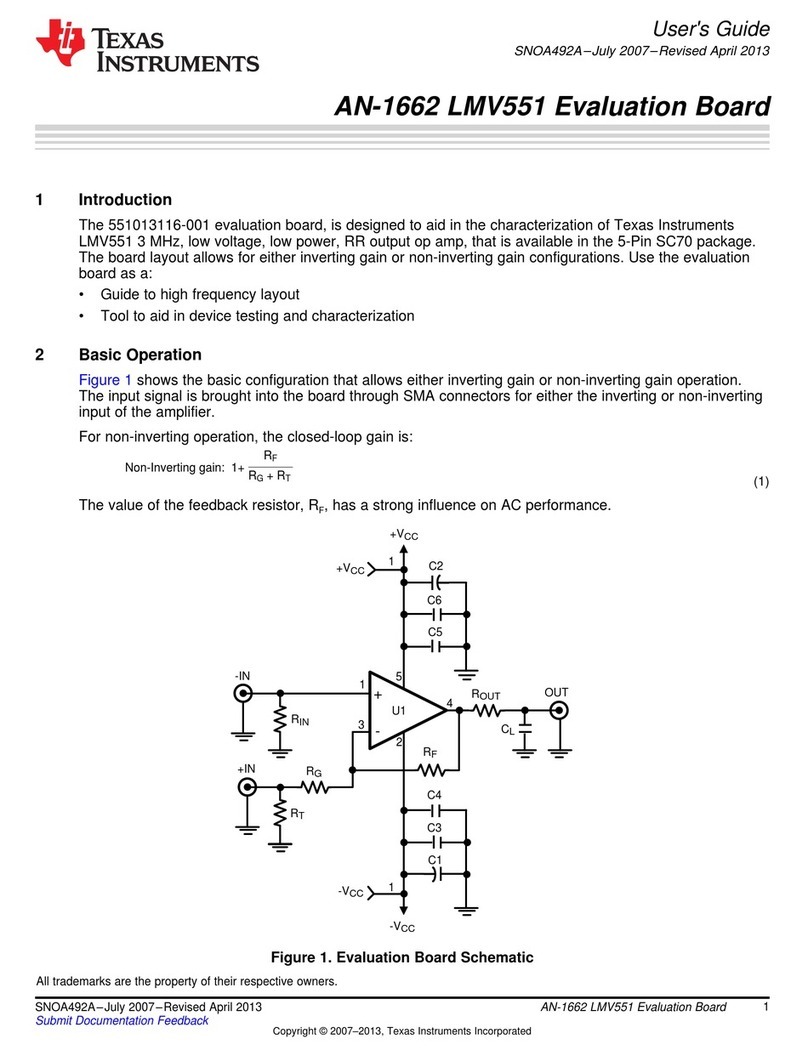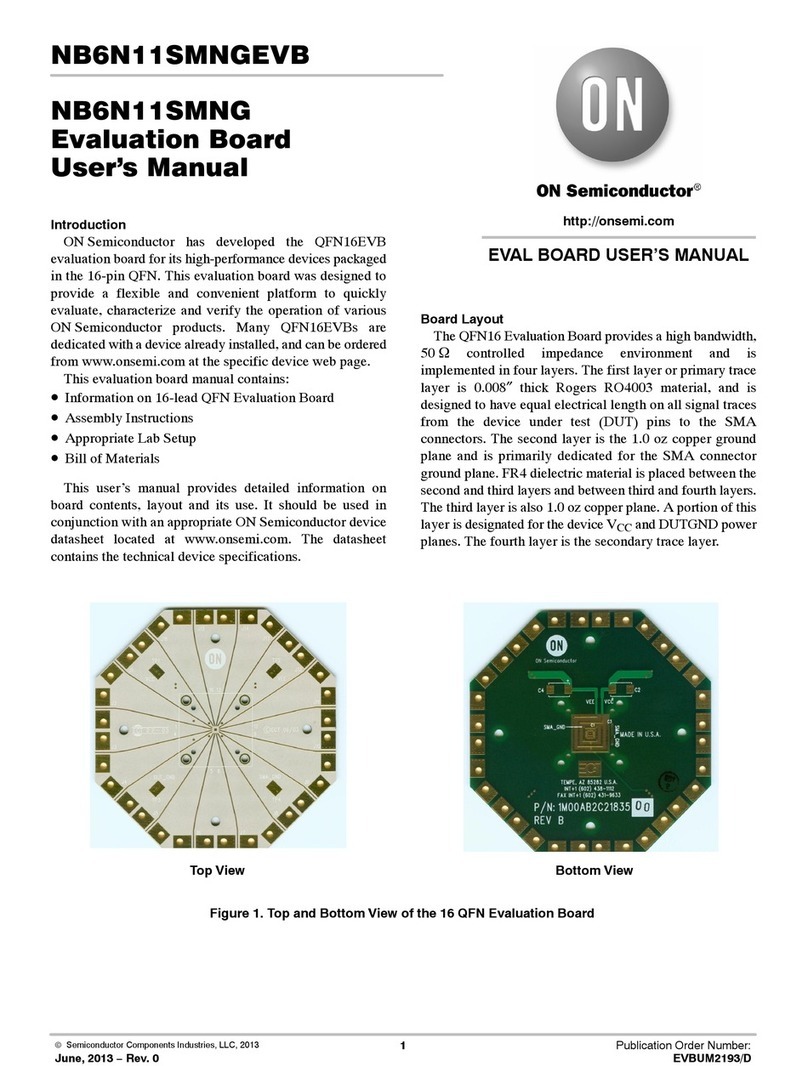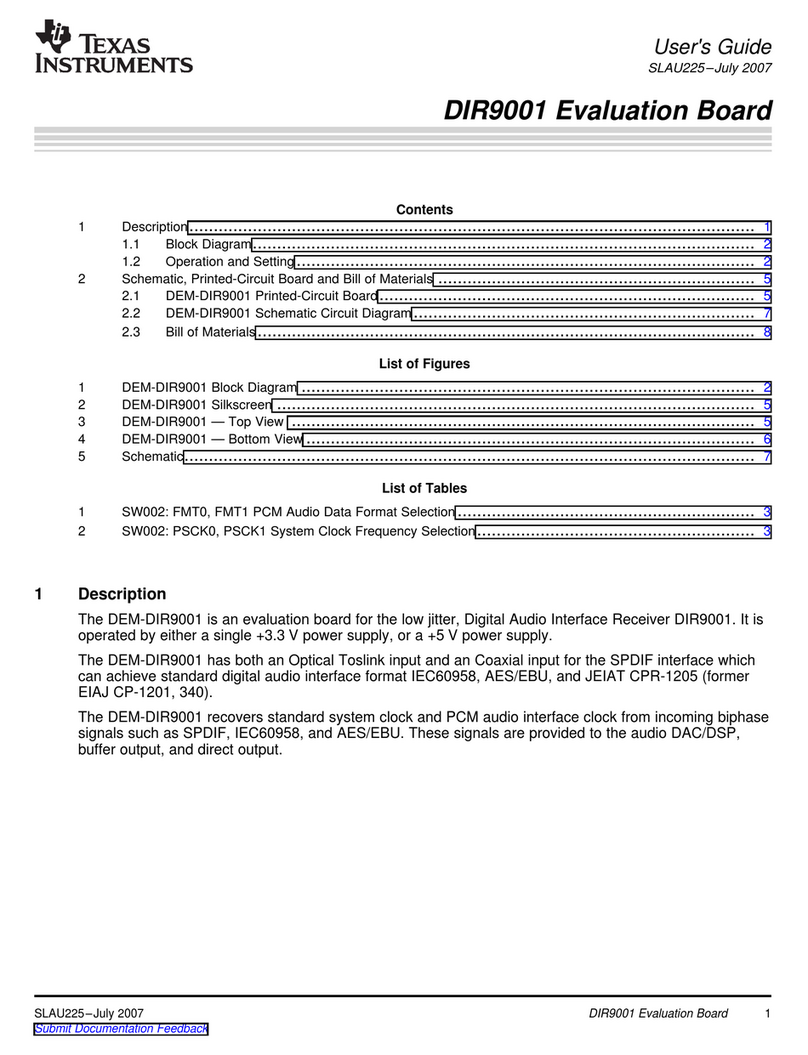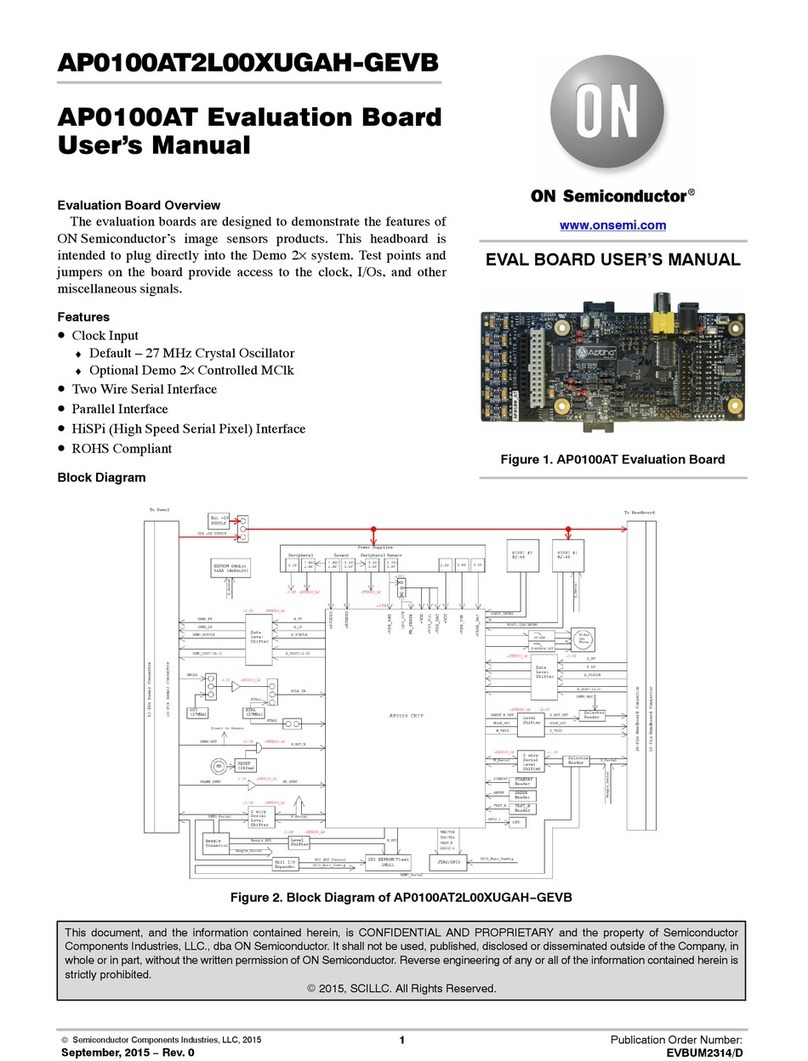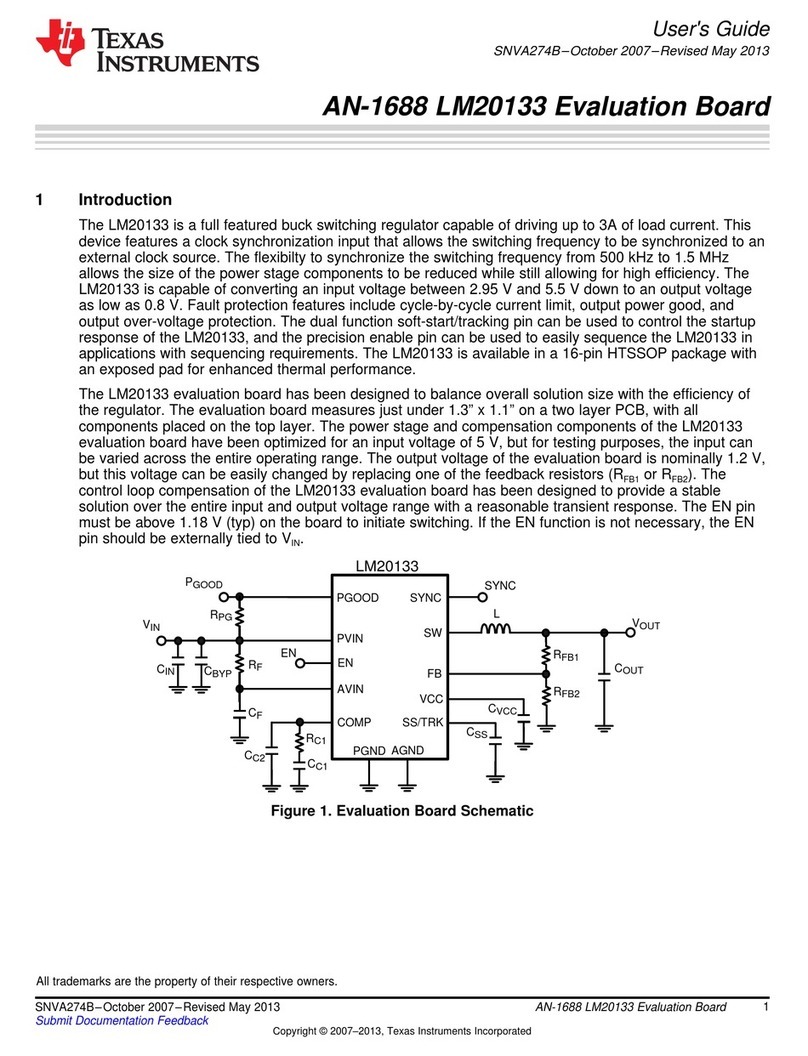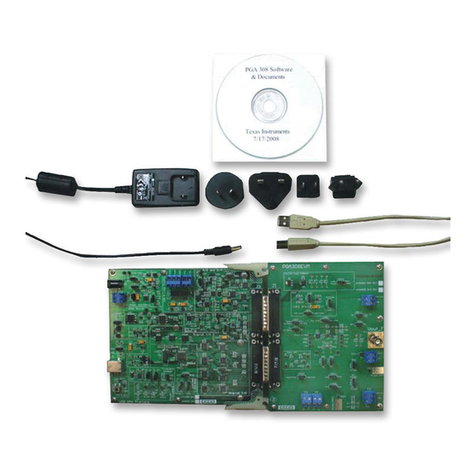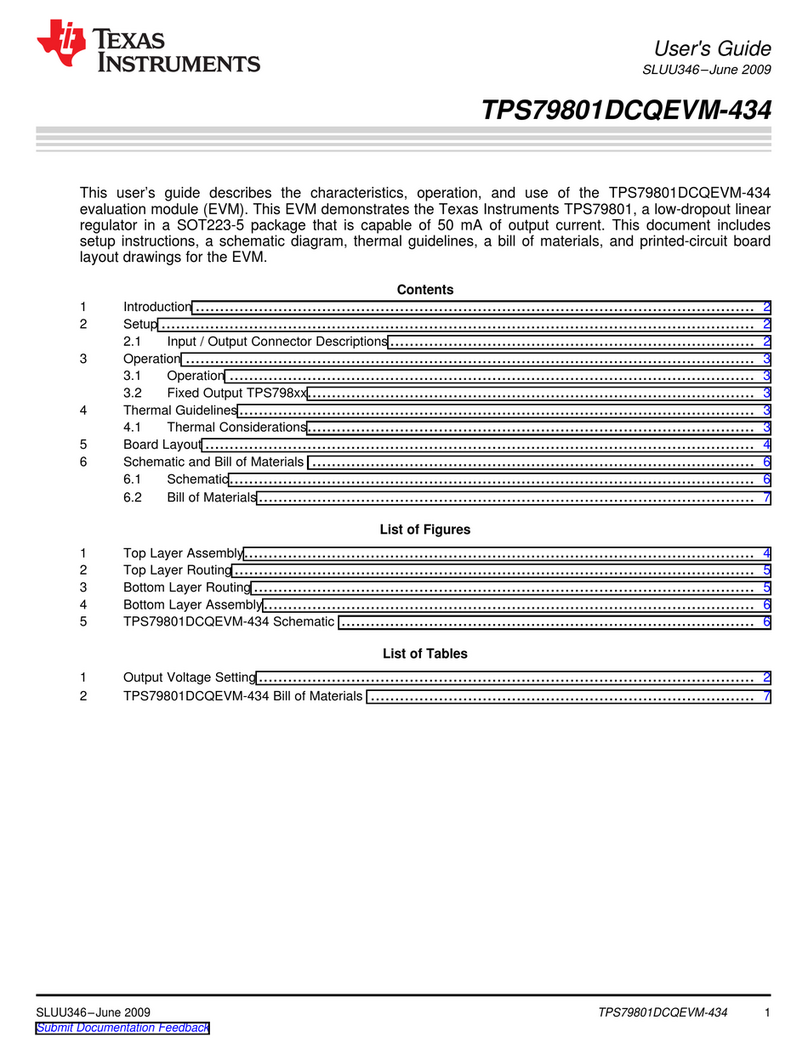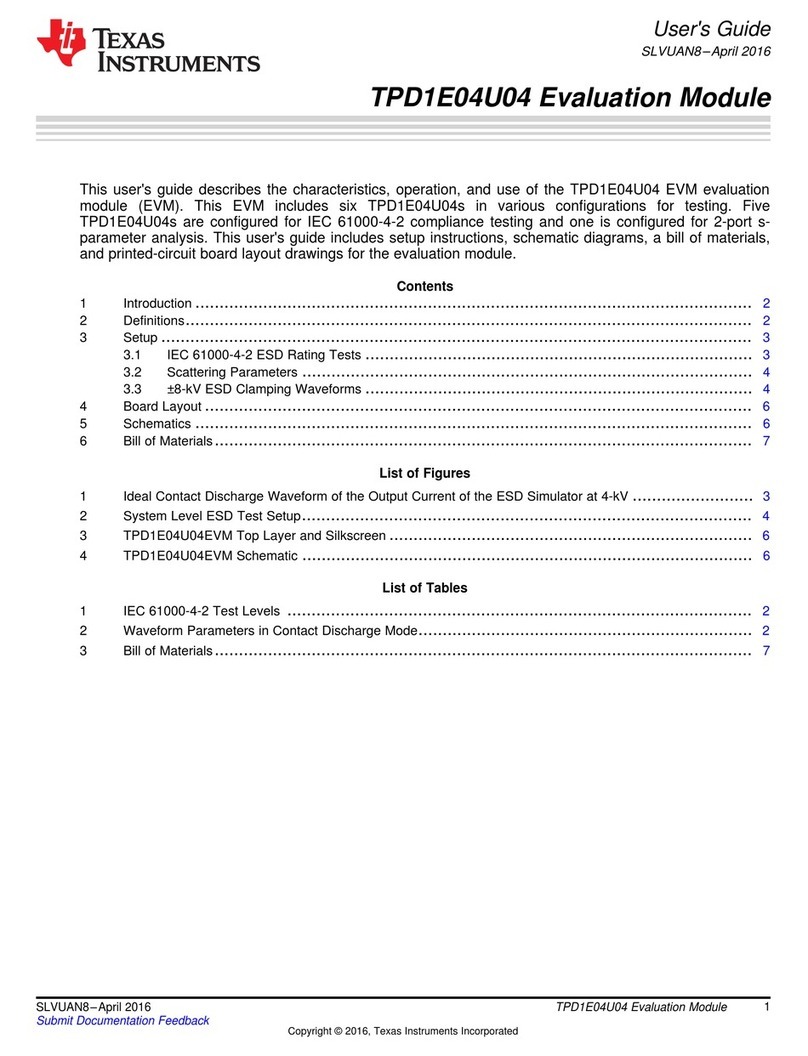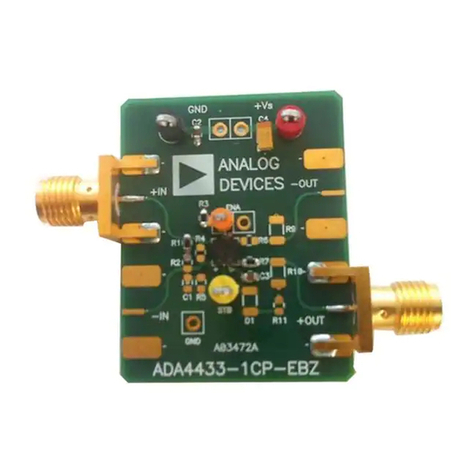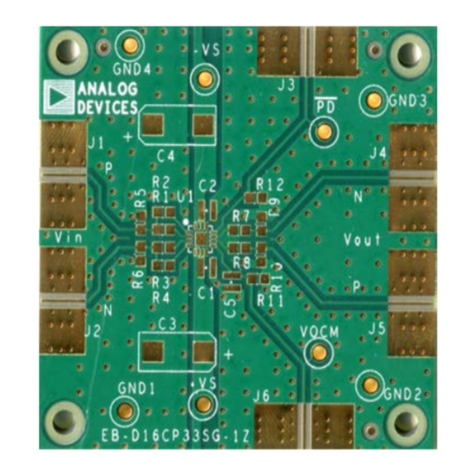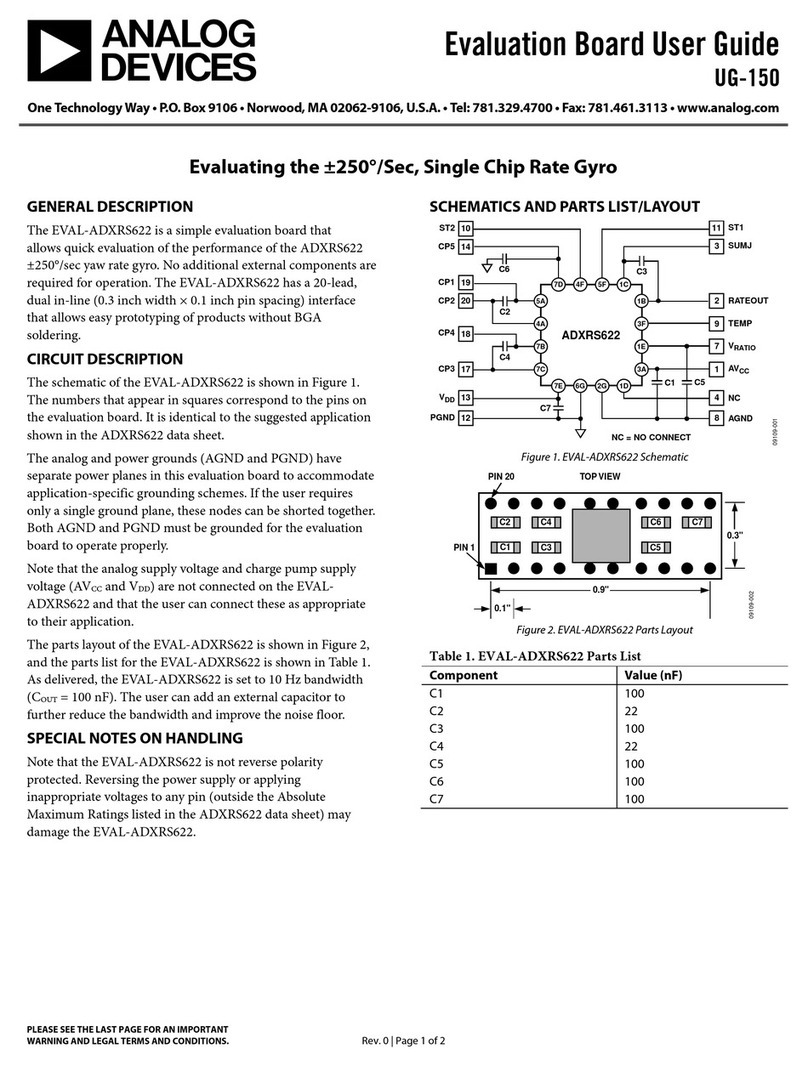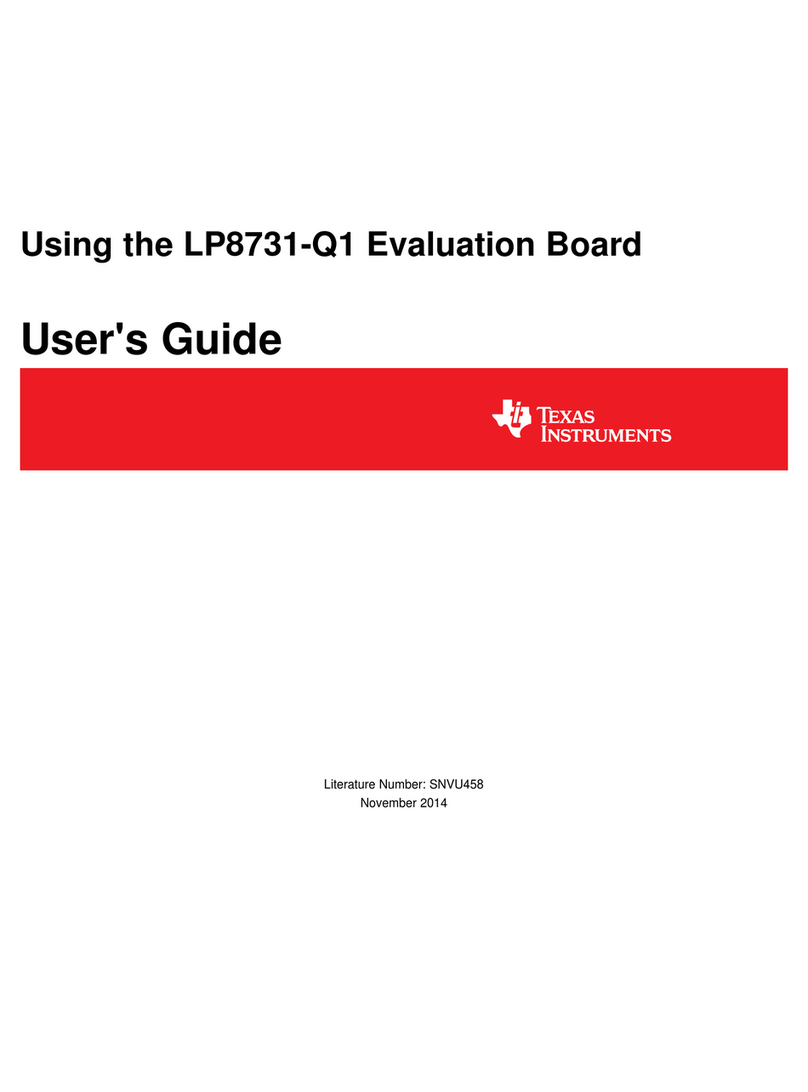
Evaluation Board User Guide UG-157
Rev. 0 | Page 3 of 12
USING THE EVALUATION BOARD
POWERING UP THE EVALUATION BOARD
The ADP5032 evaluation board is supplied fully assembled and
tested. Before applying power to the evaluation board, follow
the procedures in this section.
Enable
When the ADP5032 has an input voltage above the minimum
UVLO setting, the ADP5032 is enabled.
Jumper J3 (MODE)
Jumper JP3 (MODE) pulled high to J1 (VIN_1) forces Buck 1
and Buck 2 into forced PWM operation. JP3 (MODE) pulled
low to J11 (GND1) allows Buck 1 and Buck 2 to operate in
automatic PWM/PSM operation.
Input Power Source
If the input power source includes a current meter, use that meter
to monitor the input current. Connect the positive terminal of the
power source to J1 (VIN_1) on the evaluation board, and the nega-
tive terminal of the power source to J11 (GND1).
If the power source does not include a current meter, connect a
current meter in series with the input source voltage. Connect the
positive lead (+) of the power source to the ammeter positive (+)
connection, the negative lead (−) of the power source to J11
(GND1) on the evaluation board, and the negative lead (−) of
the ammeter to J1 (VIN_1) on the board. Be aware that the current
meters add resistance to the input source and this voltage reduces
with high output currents.
Output Load
Connect an electronic load or resistor to set the load current. If
the load includes an ammeter, or if the current is not measured,
connect the load directly to the evaluation board, with the positive
(+) load connected to one of the channels. For example, connect
Buck 1, J5 (VOUT1) and the negative (−) load connection to J8
(PGND).
If an ammeter is used, connect it in series with the load. Connect
the positive (+) ammeter terminal to the evaluation board for
Buck 1, J5 (VOUT1), the negative (−) ammeter terminal to the
positive (+) load terminal, and the negative (−) load terminal to the
evaluation board J9 (PGND).
Input and Output Voltmeters
Measure the input and output voltages with voltmeters. Make
sure that the voltmeters are connected to the appropriate
evaluation board terminals and not directly to the load or
power source.
If the voltmeters are not connected directly to the evaluation
board, the measured voltages will be incorrect due to the
voltage drop across the leads and/or connections between the
evaluation board, the power source, and/or the load.
Connect the input voltage measuring voltmeter positive termi-
nal (+) to the evaluation board J1 (VIN_1), and the negative (−)
terminal to the evaluation board J11 (GND1).
Connect the output voltage measuring voltmeter positive (+)
terminal to the evaluation board J5 (VOUT1) for measuring the
output voltage of Buck 1 and the negative (−) terminal to the
evaluation board J8 (PGND).
Turning On the Evaluation Board
When the power source and load are connected to the
ADP5032 evaluation board, the board can be powered for
operation. Perform the following steps:
1. Ensure that the power source voltage is greater than 4.2 V
and less than 5.5 V.
2. Ensure that the desired channel is enabled and monitor the
output voltage.
If the load is not already enabled, enable the load; check that it is
drawing the proper current, and that the output voltage maintains
voltage regulation.
MEASURING EVALUATION BOARD PERFORMANCE
Measuring Output Voltage Ripple on the Buck Regulator
To observe the output voltage ripple of Buck 1, place an oscillo-
scope probe across the output capacitor (COUT_1) with the probe
ground lead at the negative (−) capacitor terminal and the probe tip
at the positive (+) capacitor terminal. Set the oscilloscope to ac,
20 mV/division, and 2 μs/division time base.
Measuring the Switching Waveform
To observe the switching waveform with an oscilloscope, place
the oscilloscope probe tip at the end of the inductor with the
probe ground at GND. Set the oscilloscope to dc, 2 V/division,
and 2 μs/division time base.
Measuring Load Regulation
Test the load regulation by increasing the load at the output
and looking at the change in output voltage. To minimize
voltage drop, use short low resistance wires, especially for loads
approaching maximum current.

